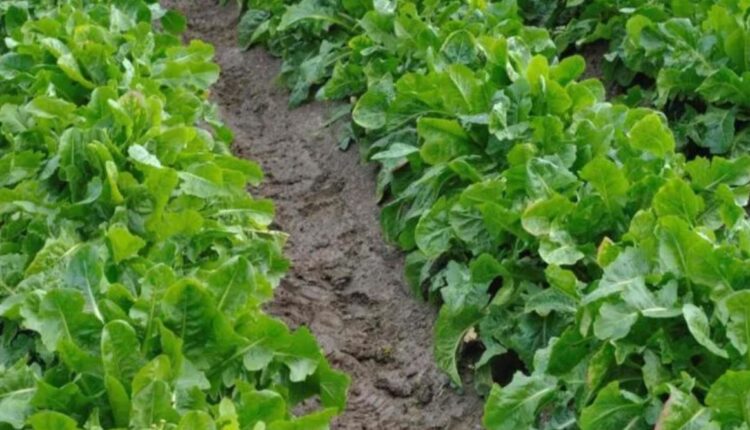Chicory Cultivation: Beneficial for Animals as well as Human Health
Chicory is cheap and sustainable fodder for animals.
Chicory Cultivation | The scientific name of chicory is ‘Cichorium intybus’, a plant with medicinal properties. Chicory is originally cultivated in northwestern Europe. Its roots are rich in fiber. Chicory plant is useful in many ways. Firstly, it is the best fodder for animals, secondly, it has many medicinal properties. It can be used as an insulin and it is also considered useful for diseases like cancer.
Not only this, its roots are roasted and mixed with coffee. Chicory’s roots look like radishes, while its flowers are blue in color from which the seeds are prepared. Chicory is cultivated for both tubers and seeds. In India, it is mainly done in Uttarakhand, Punjab, Kashmir, and Uttar Pradesh. If you also want to earn profit from chicory cultivation, then you should know the important things related to its cultivation. The main methods of chicory cultivation suggested by ICAR are as follows.
Soil and Climate
Although chicory can be cultivated in any fertile soil, if you want to cultivate it commercially, then sandy loam soil is considered the best for it, because it produces more. For a good crop of chicory, it is necessary to have a proper drainage system and PH of the land. The value should be normal. Chicory can be cultivated well in cool climates.
Chicory plants cannot tolerate high heat, so they do not grow well in high temperatures. While they grow well in the cold, they can even tolerate frost. Chicory cultivation only requires a little rainfall. Plants require a 25-degree temperature for germination and a 10-degree temperature for good growth.
Chicory Species
Two species of chicory are commonly grown. One wild and the other commercial. The wild species are usually grown for fodder. Its leaves are slightly bitter, and the tuber is also not very thick. While K1 and K13 varieties are grown commercially, their roots are sweeter in taste.
How to Sow?
Well plowing of the field is necessary for chicory cultivation because the soil should be friable for its cultivation. Make sure to mix cow dung manure while preparing the field for a good crop. As far as transplanting is concerned, seed is transplanted by spraying method only. In intensive planting, where the seeds are sprinkled directly in the field, to cultivate it commercially, the seeds have to be mixed with the soil and sprinkled.
After sprinkling chicory seeds in the field, they are lightly pressed into the soil to some depth. For the seeds to germinate easily, ridges can be prepared in the field at proper distance. August is the right time to plant the seeds. By the way it can be sown in July also.
Irrigation and Weed control
It does not require much water. Initially, germination requires moisture. So irrigate immediately after sowing. Maintain soil moisture till germination. After that if you are growing crop as fodder, then you can irrigate at an interval of 5 to 7 days. If cultivating it commercially, irrigation can be given at an interval of 20 days during the growth of plants. Weeding is also necessary. Do the first weeding after 25 days of planting the seeds, after that do the second weeding after 20 days.
When to Harvest?
Harvesting depends on whether you are growing it for fodder or for tubers. If growing it as green fodder, then harvesting should be done after 25 to 30 days of sowing. You can get 10-12 harvests from a single crop. After first cutting, plants are ready for second cutting in 12-15 days.
If you are growing the crop for tubers, dig it 120 days after sowing. The seeds are separated with the help of a machine from the excavated roots to obtain the seeds from the tubers. Up to 20 tonnes of tubers, 5 quintals of seeds are obtained from chicory cultivation per hectare. The tubers are sold in the market at Rs.400 per kg and the seeds at Rs.8,000 per quintal. In this way, if you are doing farming for tubers, you can earn a profit of Rs.
Cheap Fodder
Chicory is cultivated as fodder for ruminant animals. Due to this, the health of the animals remains good and the quality of milk is also good. It contains elements like proteins, carbohydrates, minerals and phytobioactives, which are beneficial for the health of animals. Along with this, the cost of fodder comes down for the farmers, due to which their profit increases.
Contact us – If farmers want to share any valuable information or experiences related to farming, they can connect with us via phone or whatsapp at 9599273766 or you can write to us at “[email protected]”. Through Kisan of India, we will convey your message to the people, because we believe that if the farmers are advanced then the country is happy.
You can connect with Kisan of India on Facebook, Twitter, and Whatsapp and Subscribe to our YouTube channel.



